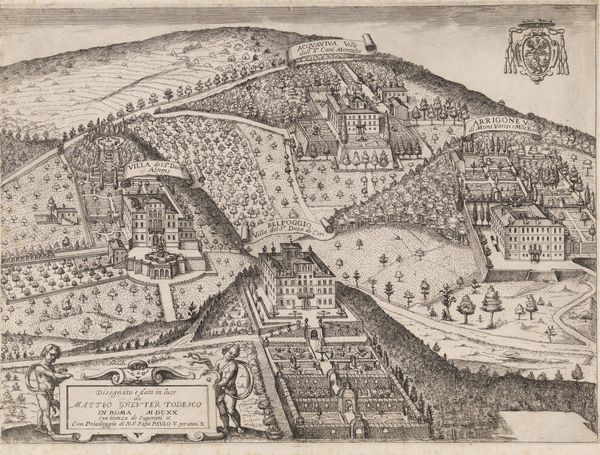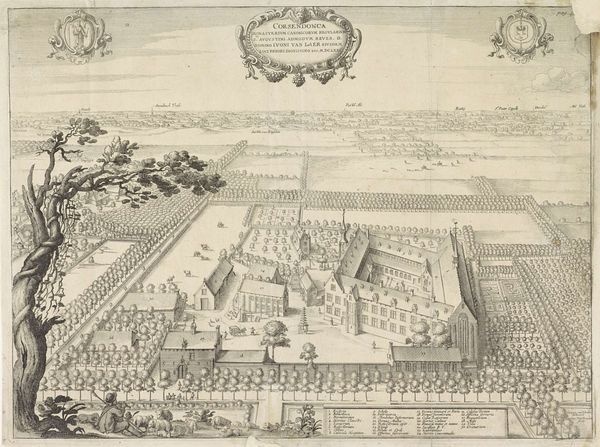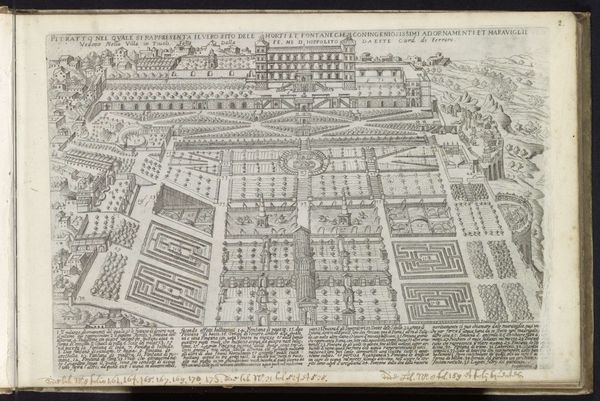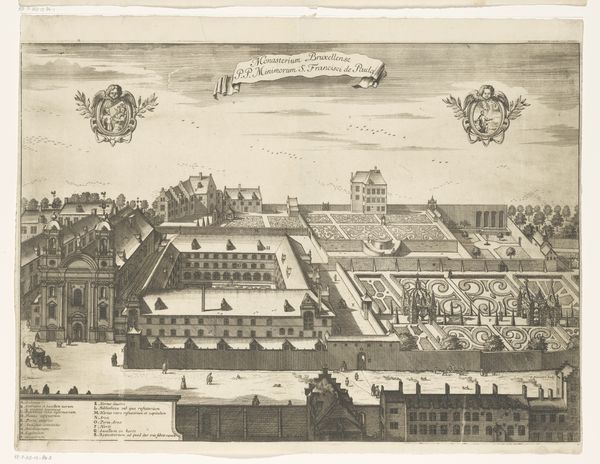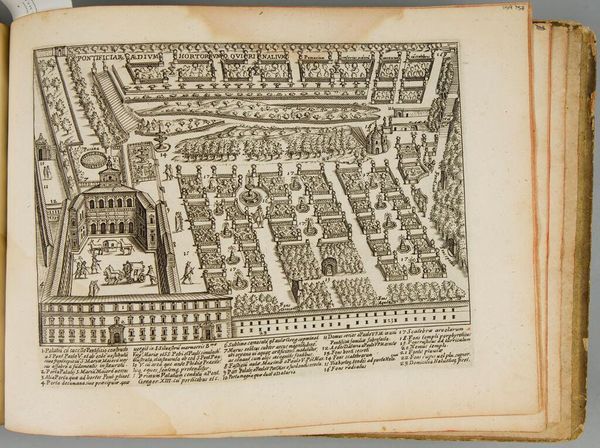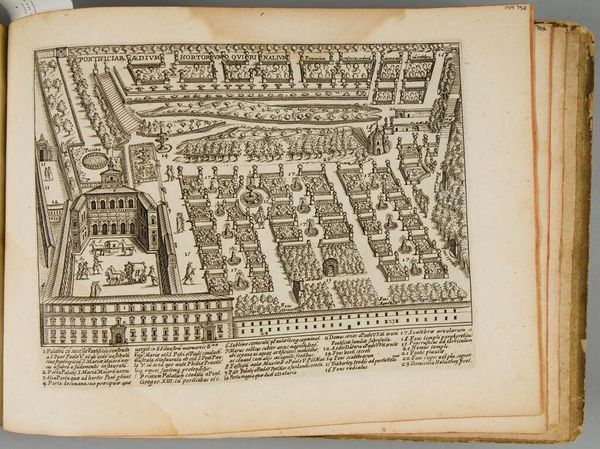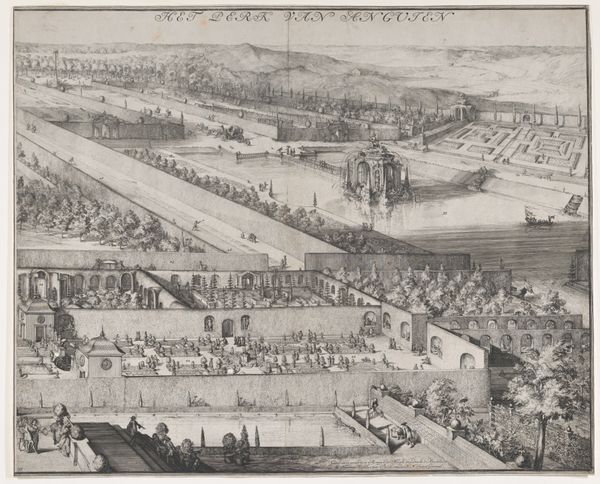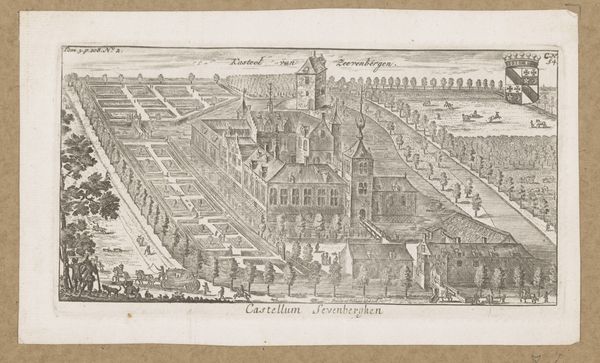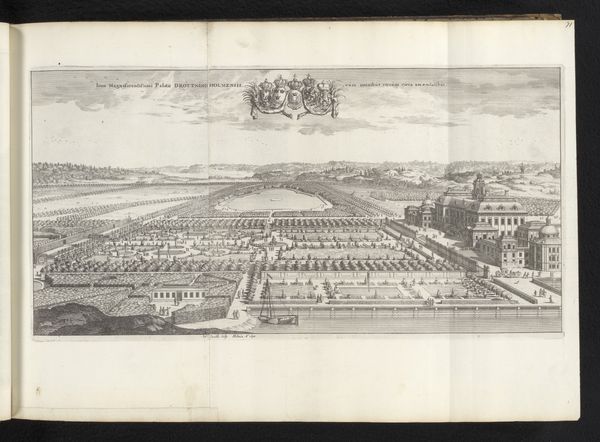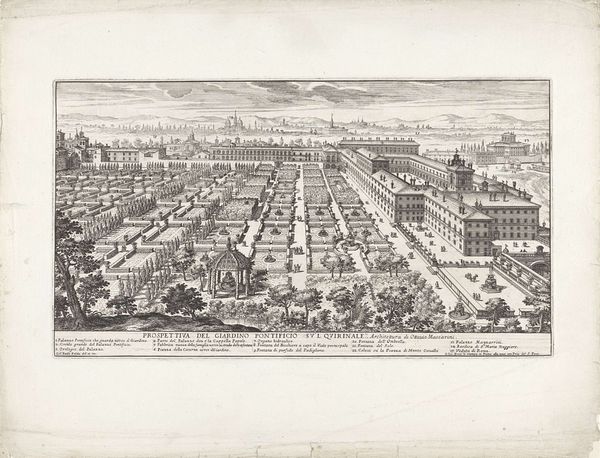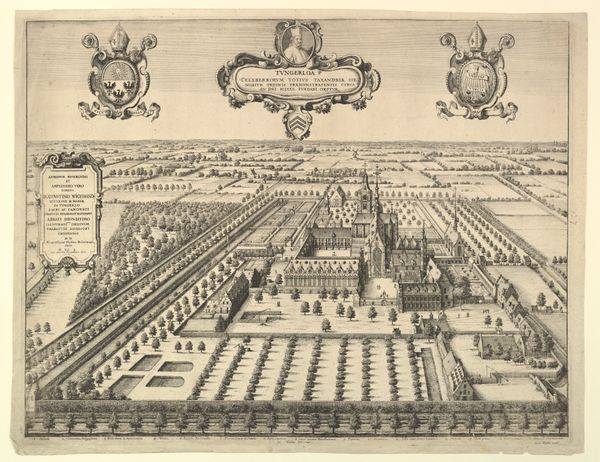
drawing, print, etching, paper, engraving
#
drawing
#
pen drawing
# print
#
etching
#
landscape
#
paper
#
geometric
#
italian-renaissance
#
engraving
Dimensions: height 240 mm, width 348 mm
Copyright: Rijks Museum: Open Domain
Curator: This etching from 1623, titled "Villa Borghese en tuin te Rome," attributed to Govert van Schayck, offers a meticulously detailed depiction of the Villa and its gardens. Editor: My initial reaction is one of awe at the labor involved. The intricate network of gardens laid out with geometric precision speaks volumes about the material resources and human power that went into its creation. Curator: Absolutely. Think about the power structures inherent in the commission of such a space. These gardens were expressions of control – control over nature, labor, and social standing in Renaissance Rome. This pen drawing reflects that power dynamic through its representation of space, reinforcing social hierarchies. Editor: And consider the materials! This is not just earth, but earth moved, shaped, and curated. Trees planted and pruned, water rerouted. The etching itself becomes a document of that transformation, a secondary artifact that extends the material implications. Curator: Indeed, the very act of etching and engraving further distances us from the reality of the Villa Borghese. We only have the *representation* of it. We must recognize the gendered and racial dynamics too—consider whose labor built and maintained this estate, whose stories remain untold in the formal record? Editor: That's crucial. This image becomes a symbol, detached from the realities of those involved in the making. We lose sight of the exploitation inherent in creating these idealised landscapes of the elite. It serves as a reminder to look at historical works like this through the lens of the working people. Curator: I agree, these idealized spaces can reveal uncomfortable truths about our past. Appreciating the artistic merit shouldn't overshadow our awareness of these often invisible social conditions. Editor: Looking at the detail makes me wonder about the copper plate's survival. Every impression speaks of wear, erasure, of use within a circuit of exchange. Curator: Precisely. The artwork serves as a compelling testament to the lasting legacies and complex narratives embedded within art history. Editor: I'm left thinking about what "materiality" means when dealing with luxury spaces like the Villa Borghese—it exposes a history of social stratification.
Comments
No comments
Be the first to comment and join the conversation on the ultimate creative platform.
